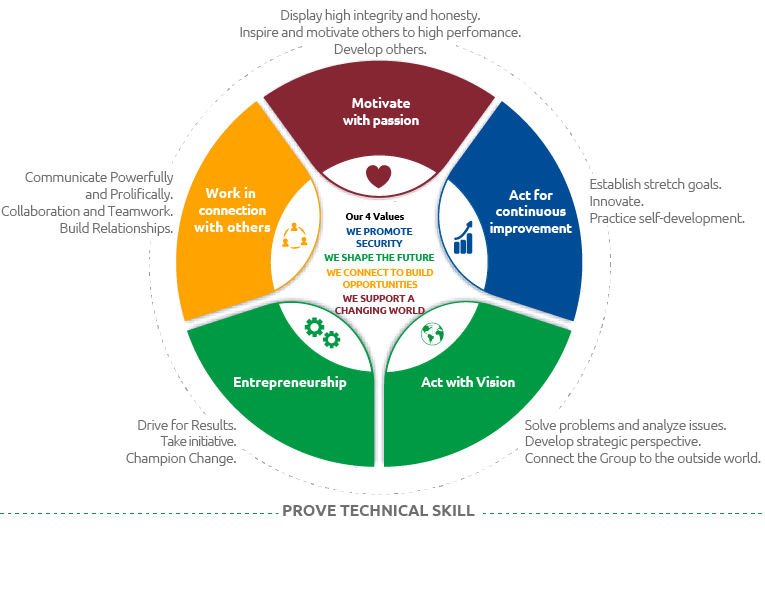Compensation policies and systems
All employees annually receive a Participation Bonus based on the company’s profitability and productivity
At Snam, the administrative and reward practices are merit-based, both in terms of professional development and with regard to career opportunities. At the same time, it is a benchmark so that personnel management can meet the fairness and sustainability criteria.
Compensation systems are updated periodically based on a comparison with the reference markets and in consideration of instructions received from external stakeholders. In particular, these systems are meant to ensure recognition of the results achieved, the quality of the professional contribution provided and individual development potential of the person. In 2018, with the objective of creating greater alignment of the long-term variable remuneration with the primary goal of creating value for shareholders, the scope of possible recipients of the Long-Term Incentive Plan (ILT) was extended to cover all senior management.
Executives |
The remuneration system consists of two parts: a fixed remuneration, with annual adjustments for merit or increased responsibility or more senior role, and a variable remuneration with incentives aimed at enhancing professional contributions in the short-term, by awarding an annual monetary incentive (IMS), as well as in the medium-/long-term by allocating a long-term share-based incentive (ILT). |
Non-executive population |
Snam adopts a short-term variable incentive plan intended to reward best performance and the young resources with potential for development. |
In 2018, the use of the new target assignment and assessment system known as Performance Management, was confirmed; it also contains targets regarding behavioural aspects, sustainability and the prevention of accidents in the workplace. All the assessment processes adopted are formalised and include a feedback interview, which constitutes an institutional opportunity for discussion and communication between managers and employees, also in order to gather information that can be used to define new actions for personnel development and enhancement.
In 2018, Snam focused on improving leadership skills by implementing the new skill model, keeping succession plans solid and structured, identifying and enhancing the value of talent throughout the organisation to ensure a sustainable line of succession and to intensify the level of engagement. Specifically, the new Performance Management System was launched during the year, which was decisive for the Talent Review Discussion and the creation of the Succession Plans. When it is fully operational the new system will involve the entire business through the progressive extension of the performance scope over a three-year period (2018-2020).
| Download XLS (16 kB) |
|
Men |
Women |
Total |
Executives |
87 |
15 |
102 |
Middle Managers |
392 |
77 |
469 |
Office workers |
124 |
38 |
162 |
Total |
603 |
130 |
733 |
| Download XLS (16 kB) |
|
2016 |
2017 |
2018 |
|||
|
Assigned (no.) |
Attained (%) |
Assigned (no.) |
Attained (%) |
Assigned (no.) |
Attained (%) |
Executives |
67 |
91 |
77 |
95 |
131 |
97 |
Middle Managers |
313 |
93 |
291 |
97 |
274 |
87 |
Other personnel |
88 |
100 |
67 |
96 |
63 |
89 |
In 2018, fewer sustainability goals were assigned to middle managers and office workers compared to the previous years. Anyway, behavioural targets were proposed for the entire corporate population, as set out in the Snam leadership model.
The model contains the five fundamental skills and the five types of virtuous behaviour which represent the key elements of motivation and incentives for employees. This distinctive behaviour, also included in the Performance Management system, demonstrates how the Company is integrating its sustainable business model with the promotion of virtuous behaviour.
Snam leadership model

All the jobs within Snam, with the exclusion of executives, undergo an analytical and overall evaluation regarding the Complexity, Responsibility, Experience and Autonomy (C.R.E.A.) factors. In 2018, 198 CREA assessments were approved.